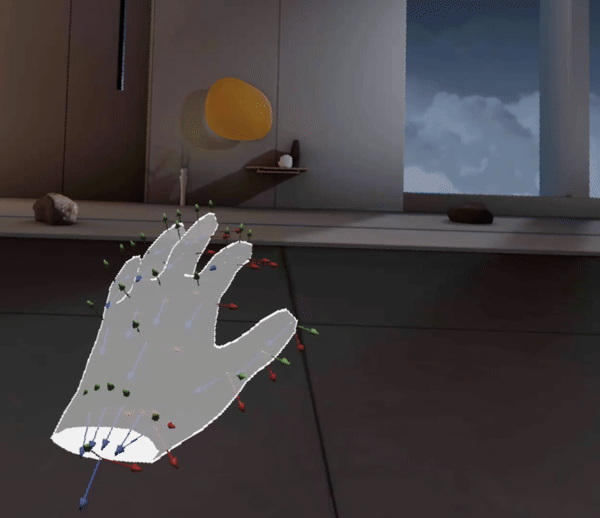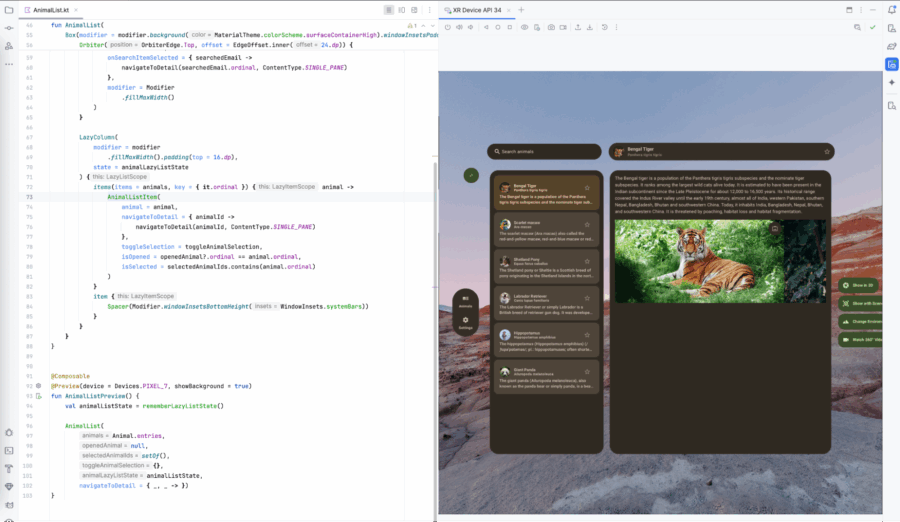
In General XR News
May 21, 2025 – From Google I/O this week, Google’s annual developer conference, the company has released Developer Preview 2 of its Android XR SDK, introducing new tools and features aimed at making it easier for developers to build immersive experiences on upcoming Android-based XR devices.
The update follows the initial preview launched in partnership with Samsung, Qualcomm, and Unity. According to Google, the second preview improves usability and expands support for spatial content using familiar Android development tools.
Key Updates
The new preview adds support for playback of 180° and 360° video, including stereoscopic formats, through the Jetpack XR SDK. Developers can now also create more adaptable XR user interfaces using tools like SubspaceModifier, designed to simplify layout adjustments in immersive environments.
Similarly, the update provides developers with customizations that mean apps designed for larger screens can now adjust more easily to XR headsets, thanks to updated design tools that support 3D environments.
ARCore for Jetpack XR adds hand tracking, allowing apps to detect and respond to hand gestures after permission is granted. Google also updated the Android XR Emulator to support AMD GPUs and improve performance in Android Studio.

Unity and AI Integration
Unity developers can now upgrade to a new pre-release version 2 of the Unity OpenXR: Android XR package, which improves performance and supports features like Dynamic Refresh Rate and hand occlusion. Google also recently released new Android XR Samples for Unity projects that demonstrate features like passthrough and hand, plane, and face tracking.
Firebase AI Logic for Unity is now in public preview too, enabling generative AI integration with XR apps, including support for voice and visual inputs using Google’s Gemini model.
Ecosystem and Device Rollout
Google confirmed Android XR will launch first on Samsung’s Project Moohan headset later this year. XREAL will follow with Project Aura, a tethered, portable developer-focused XR device running Android apps.
The Google Play Store is also getting prepped for the launch of Android XR, and it will start to list 2D Android apps that will be supported on the Android XR Play Store, which is set to launch later this year.

The company is encouraging developers to test their apps in the updated Android XR Emulator and submit immersive assets like stereoscopic video previews and spatial screenshots.
Later this year, Google plans to share more about its XR plans for smart glasses. In the meantime, developers can access all of the tools, libraries, and resources they need to work with the Android XR SDK at developer.android.com/develop/xr.
More details are expected during Google I/O as it continues this week.
Image credit: Google
About the author
Sam is the Founder and Managing Editor of Auganix, where he has spent years immersed in the XR ecosystem, tracking its evolution from early prototypes to the technologies shaping the future of human experience. While primarily covering the latest AR and VR news, his interests extend to the wider world of human augmentation, from AI and robotics to haptics, wearables, and brain–computer interfaces.
